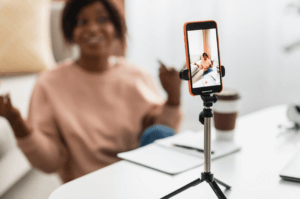As a therapist, client communication outside of sessions can be a delicate balance. While offering support between appointments can strengthen the therapeutic relationship, it’s important to set clear boundaries to maintain ethical standards, prevent burnout, and encourage client autonomy.
Here’s how to navigate between-session communication in a way that benefits both you and your clients.
Establish Clear Expectations
From the start, define when and how clients can contact you between sessions. Consider including communication policies in your intake paperwork and reinforcing them during the first few sessions. Important aspects to clarify include:
✔ Preferred communication methods – Let clients know if email, phone, or a client portal is the best way to reach you.
✔ Response times – Set realistic expectations, such as responding within 24-48 hours on business days.
✔ Emergency protocols – Make it clear that you are not always available between sessions and provide crisis resources for urgent situations.
Use Secure and Professional Communication Tools
Protecting client confidentiality is essential. If you allow between-session communication, use HIPAA-compliant platforms such as:
✔ Secure email or messaging portals – Avoid discussing personal details over unencrypted email or text.
✔ Designated office phone lines or voicemail – Keep work and personal communication separate.
✔ Client portals – Many EHR systems offer secure messaging features for non-urgent communication.
At Great Lakes Psychology Group, our custom EHR system includes a secure messaging feature, allowing you to communicate with clients safely while maintaining professional boundaries.
Send Resources to Keep Clients Engaged
Between-session communication can be a great way to reinforce therapy work. Sending homework assignments, worksheets, or PDFs after a session helps clients stay engaged and apply therapeutic strategies in real life. This not only supports their progress but also strengthens their investment in the process. Secure client portals make it easy to share materials while ensuring confidentiality.
Determine What Is Appropriate to Address
While some client communication may be necessary, it’s important to guide clients toward self-reliance and ensure that between-session contact doesn’t replace therapy. Consider responding to:
✔ Clarification questions – If a client is unsure about a therapy assignment or technique, a brief response can help them stay engaged.
✔ Rescheduling requests – Having a clear policy for cancellations and reschedules can help streamline communication.
✔ Short check-ins – For certain clients, a quick supportive message can help reinforce progress.
However, avoid engaging in full therapy conversations via messages, as this can blur boundaries and be difficult to manage ethically.
Encourage Self-Reflection Instead of Instant Responses
If a client frequently reaches out between sessions, consider using this as a therapeutic opportunity. Encourage journaling, grounding techniques, or self-soothing strategies to help them process emotions independently. Setting boundaries fosters their resilience and helps ensure therapy remains structured.
Maintain Your Own Well-Being
Constant client communication can lead to therapist burnout if not managed intentionally. While being responsive is important, setting boundaries around communication helps protect your time and energy, allowing you to be fully present in sessions. Here are some ways to maintain your well-being while managing client communication effectively:
✔ Use a Separate Email for Clients – Keep work and personal life distinct. Secure messaging platforms, like those offered by Great Lakes Psychology Group, help streamline communication.
✔ Set Specific Times to Check Messages – Avoid constant interruptions by designating response windows during work hours.
✔ Turn Off Notifications When Off-Duty – Silence alerts outside office hours to maintain work-life balance.
✔ Use Auto-Responses – Set up an out-of-office message to manage expectations, such as:
“I’ll respond within 24-48 hours during business hours. If urgent, contact emergency services.”
Finding the Right Balance
Between-session communication can be a valuable tool when managed effectively. By setting clear boundaries, using secure communication methods, and encouraging client autonomy, you create a framework that supports both your clients’ growth and your well-being as a clinician.
At Great Lakes Psychology Group, we provide therapists with the tools to communicate securely, share resources, and manage administrative tasks with ease. With access to secure messaging, scheduling support, and referral assistance, you can focus on delivering quality care while maintaining a healthy work-life balance. Learn more at careers.glpg.net.

 A Clinician’s Guide to Planning for Winter Breaks in Therapy
A Clinician’s Guide to Planning for Winter Breaks in Therapy Social Media for Therapists Who Want to Grow Their Private Practice
Social Media for Therapists Who Want to Grow Their Private Practice Building Lasting Therapeutic Relationships from Session One
Building Lasting Therapeutic Relationships from Session One